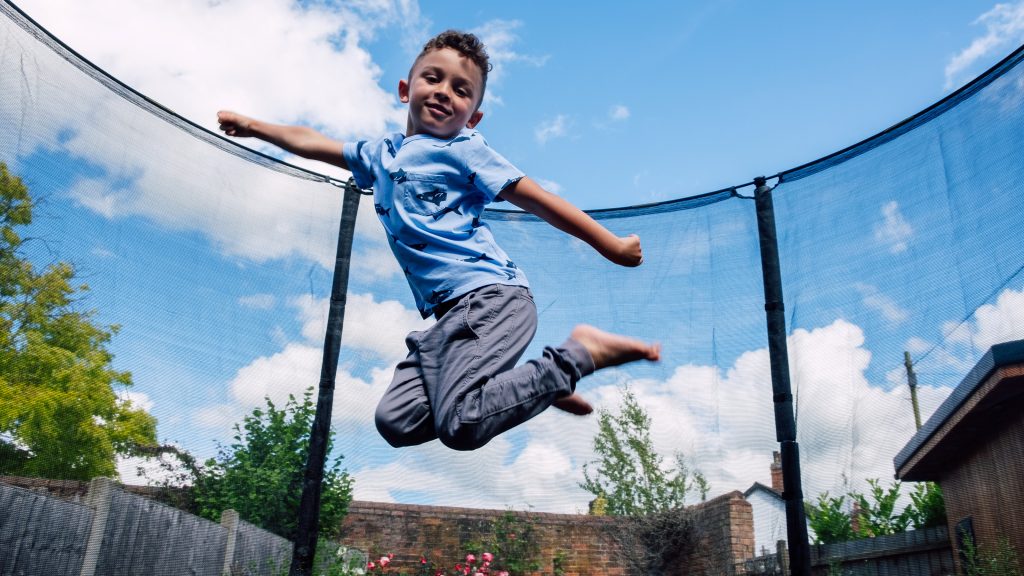Trampolining is a popular and exhilarating activity that brings joy and physical benefits to children. However, ensuring a secure trampolining experience is paramount to prevent accidents and injuries. In this article, we will delve into essential guidelines that prioritize safety, allowing kids to enjoy the thrill of bouncing while minimizing risks and promoting a secure trampolining environment.
Proper Trampoline Placement:
Begin by selecting an appropriate location for the trampoline. Place it on a level surface away from obstacles such as trees, fences, or other structures. Ensure there is sufficient clearance above the trampoline to prevent collisions with overhead objects. Avoid setting up the trampoline on surfaces with rocks, concrete, or other hard materials that could pose a risk in case of falls.
Quality Trampoline and Safety Features:
Invest in a high-quality trampoline with safety features. Look for models with sturdy frames, durable springs, and a reliable enclosure net. The enclosure net should be securely attached to the trampoline and have no gaps that could allow a child to fall through. Regularly inspect the trampoline for wear and tear, and promptly replace any damaged components to maintain its safety features.

Supervision is Key:
Never underestimate the importance of adult supervision during trampolining activities. A responsible adult should be present to oversee the children and ensure they follow safety guidelines. The supervisor can intervene if risky behavior is observed, provide assistance when needed, and act quickly in case of an emergency. Supervision is crucial for maintaining a safe trampolining environment.
Limit the Number of Bouncers:
Establish a rule for the maximum number of children allowed on the trampoline at one time. Overcrowding increases the risk of collisions and accidents. A manageable number of bouncers ensures that each child has enough space to enjoy the activity safely. Educate children about the importance of waiting their turn and adhering to established rules for a harmonious trampolining experience.
Age-Appropriate Activities:
Tailor trampolining (https://leotoystore.com/collections/trampoline) activities to the age and skill level of the participants. Younger children may need simpler activities with close supervision, while older kids can engage in more complex maneuvers. Discourage risky behavior, such as somersaults or flips, unless under the guidance of a trained instructor in a controlled environment. Promoting age-appropriate activities minimizes the likelihood of injuries.
Teach Safe Entry and Exit:
Instruct children on the proper way to enter and exit the trampoline. Use a sturdy ladder for access and emphasize the importance of climbing up and down carefully. Discourage jumping off the trampoline onto the ground, as this can lead to injuries. Teaching safe entry and exit practices contributes to an overall safer trampolining experience.
Establish Ground Rules:
Clearly communicate ground rules for trampolining activities. Emphasize the prohibition of pushing, roughhousing, or engaging in activities that could lead to collisions. Establish boundaries for safe bouncing and encourage children to stay in the center of the trampoline. Ground rules provide a framework for safe play and foster a culture of responsible behavior on the trampoline.
Regular Maintenance Checks:
Perform regular maintenance checks on the trampoline to ensure it remains in optimal condition. Inspect the frame, springs, and enclosure net for any signs of wear, rust, or damage. Tighten bolts and fasteners as needed. A well-maintained trampoline is more likely to provide a secure bouncing experience and reduce the risk of accidents.

Weather Considerations:
Consider weather conditions before allowing trampolining activities. Avoid trampolining during windy or stormy weather, as it can pose a safety risk. Wet surfaces on the trampoline can also contribute to slips and falls, so ensure the trampoline is dry before use. Monitoring weather conditions and making informed decisions contribute to a safer trampolining environment.
Emergency Preparedness:
Prepare for emergencies by having a first aid kit nearby and ensuring that adults supervising the trampoline are familiar with basic first aid procedures. Additionally, have a phone readily available for quick access to emergency services if needed. Being prepared for emergencies ensures a swift response and appropriate care in case of accidents.
Safety should always be the top priority when it comes to kids’ trampolining activities. By following these guidelines, parents, caregivers, and supervisors can create a secure trampolining environment that allows children to enjoy the benefits of bouncing while minimizing the risk of accidents and injuries. A combination of responsible adult supervision, proper equipment, and adherence to safety measures ensures that trampolining remains a thrilling and safe activity for children.



